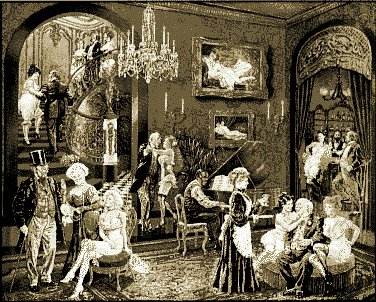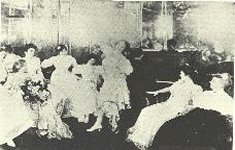
|
The parlor of Lulu White's Mahogany Hall, One of the posh bordellos of Storyville.
|
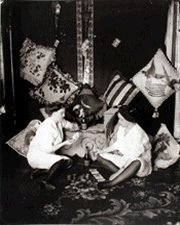
please do not think
I am the wayward girl
you describe. I alone
have made this choice.
Save what I pay for board,
what I earn is mine. Now
my labor is my own.
—Letters from Storyville, January 1911
Source:
www.emory.edu
|
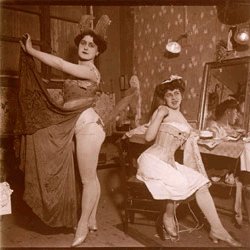
I’ve learned the camera well—the danger
of it, the half-truths it can tell, but also
the way it fastens us to our pasts,
makes grand
the unadorned moment.
—Letters from Storyville, December 1911
Source:
www.emory.edu
|
Prostitutes concentrated in the blocks between Bourbon and Rampart Streets, particularly along Bienville, Burgundy, Conti, Dauphine, and St. Louis Streets.
Source:
loyno.edu
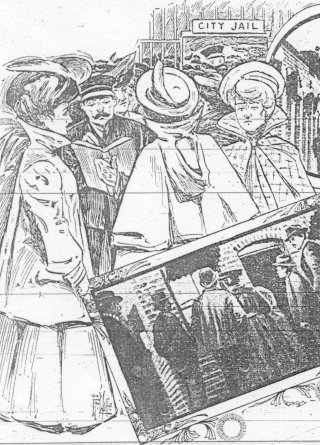
Without question, prostitution permeated the French Quarter. The New Orleans police frequently apprehended street-walking prostitutes on Decatur Street, the avenue separating the Vieux Carré from the dock workers and sailors laboring along the Mississippi River. Officers seized numerous other street-walking courtesans for loitering, drunkenness, or vagrancy. These women who worked from cribs or wandered the French Quarter’s narrow passages were mostly white but tended to be younger in age, frequently in their very late teens or early twenties. Apparently these women were newcomers to the French Quarter’s sex trade, not yet assimilated into the more organized brothels to which cab drivers and bartenders directed customers.
Source:
loyno.edu
Cribs
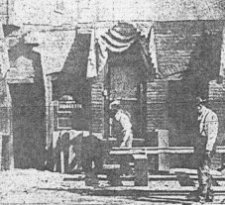
… do I deceive
anyone? Were they to see my hands, brown
as your dear face, they’d know I’m not quite
what I pretend to be.
—Letter Home, New Orleans, November 1910
Source:
www.emory.edu
|
"There ain’t an old house in the Quarter that don’t have roaches," shouts the landlady in Tennessee Williams’ The Lady of Larkspur Lotion. The roach imagery supplies a metaphor for the pervasive vice lurking in shabby taverns, dank bordellos, dark alleys inhabited by drug addicts and alcoholics, and poverty-ridden households. Decay and raw existence stripped the niceties of life from Vieux Carré residents. Yet, what seemed a hopeless atmosphere offered freedom for artists such as William Faulkner and Tennessee Williams to express themselves through their literature. Oddly, the animated yet less than reputable nature of the neighborhood fortified the influence of the French Quarter in shaping twentieth-century American letters. Moreover, the aura of decadence surrounding the historic district supplied a means for New Orleans businessmen to develop the tourism industry within the city. The pervasive vice stirred the imagination and offered an ample number of activities for free-spending, joy-seeking out-of-towners.
Source:
loyno.edu
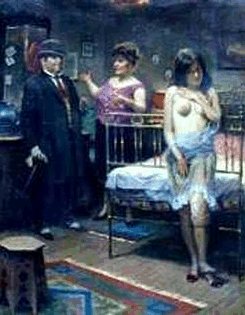
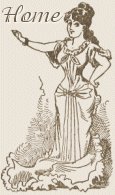
Hosted by
Tripod
|




